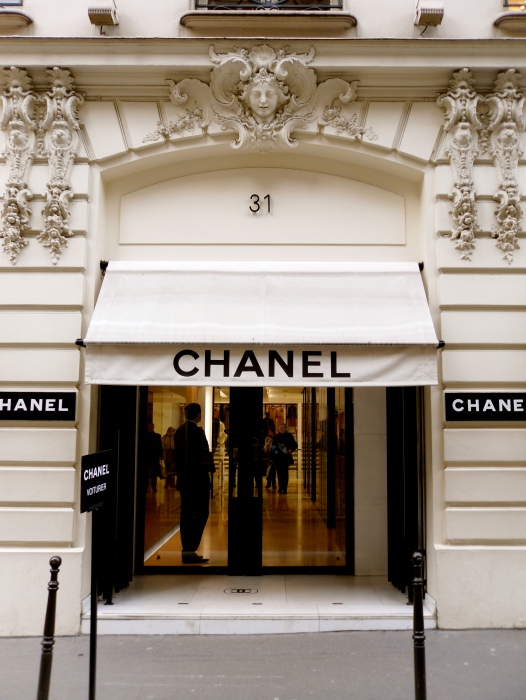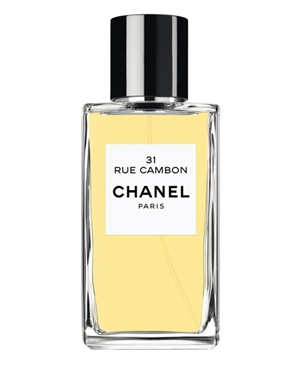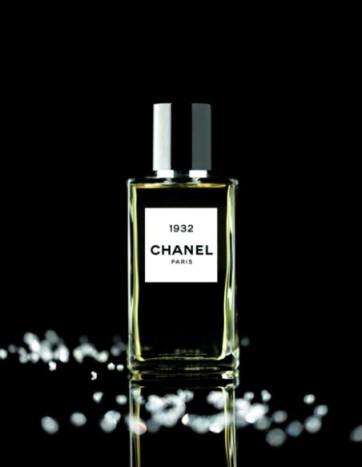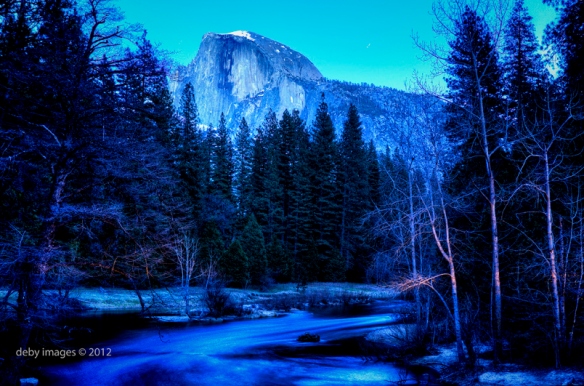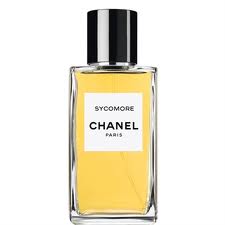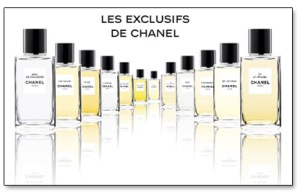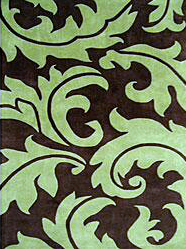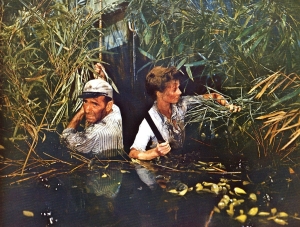Out of Africa. Smoldering sensuality that purrs like a languid cheetah resting on a sandalwood branch. Sophisticated luxury under the most polite and elegant of veneers. The Chanel signature taken to exotic lands.
That is essence of Bois des Iles, a spectacular Chanel fragrance with a very feline heart that makes me just close my eyes in the deepest of admiration. I’m not generally a Chanel enthusiast; the typical floral-aldehyde signature leaves me rather cold, and I find that restrained aloofness to be far from my style. Whether green and powdery, floral and soapy, or just plain unobtrusive, Chanel rarely tempts me. But Bois des Iles…. my God, is it good! And I’m just talking about the current eau de toilette version from the Exclusifs line. One can only imagine the smoldering richness of the pure Parfum. And the vintage version would probably bring me to my knees in tears of joy.
Bois des Iles (which translates to “Wood of the Isles”) has a long, rich history. Ostensibly the very first “woody” fragrance for women, it was released in 1926 and was the result of collaboration between Coco Chanel and her cohort in olfactory adventures, the great, legendary Ernst Beaux. He was a Russian émigré who created some of the greatest perfumes in history, and an extremely intellectual man who supposedly used both Tchaikovsky and the great Russian poet and novelist, Aleksandr Pushkin, as his inspiration for Bois des Iles. In specific, Beaux is said to have created the perfume while entranced by Tchaikovsky’s opera, The Queen of Spades (“La Dame de Pique”), which was based on Pushkin’s story of love, obsession and madness.
Chanel, however, gives a very different backstory for the perfume on its website, describing instead the Paris of the 1920s, gripped by the fever of Africa and exotic lands:
Josephine Baker who danced at Le Bal Negré and who helped trigger the fascination with Africa in 1920s Paris.
The year was 1926. People were discovering the explorer within themselves. They danced at the Bal Nègre. Africa became the inspiration for fabrics, jewelry and earthenware. Mademoiselle Chanel and Ernest Beaux took their turn at evoking distant lands with BOIS DES ILES. It’s all there: the precious woods, the opiate scents and magnificent, languid flowers. The fragrance is a mysterious, faraway continent in itself.
I never even knew Africa was mentioned when I was testing the perfume and, yet, oddly, my notes for Bois des Iles were filled with comments about languid cheetahs, the sizzle of the Serengeti, and opiate woods. There is something about the sandalwood heart of the perfume that purrs not like a pussy cat but, rather, like a large, sleek, jungle cat.
 It’s very surprising given the current situation worldwide for real Indian sandalwood. The current Bois des Iles is not the exact same formula used in the perfume created back in 1926. This one was released in 2007 as part of Chanel’s prestige, quasi-niche line, Les Exclusifs, and was created by the line’s in-house perfumer, Jacques Polge, who tried to stick as closely as he could to the original version. Unfortunately, he was hampered by the fact that Mysore sandalwood — the essence of the first Bois des Iles — is now in danger of extinction. So, he constructed an ode to sandalwood that doesn’t use the actual ingredient — and what a spectacular job he did!
It’s very surprising given the current situation worldwide for real Indian sandalwood. The current Bois des Iles is not the exact same formula used in the perfume created back in 1926. This one was released in 2007 as part of Chanel’s prestige, quasi-niche line, Les Exclusifs, and was created by the line’s in-house perfumer, Jacques Polge, who tried to stick as closely as he could to the original version. Unfortunately, he was hampered by the fact that Mysore sandalwood — the essence of the first Bois des Iles — is now in danger of extinction. So, he constructed an ode to sandalwood that doesn’t use the actual ingredient — and what a spectacular job he did!
According to Fragrantica, the notes in Bois des Iles include:
aldehydes, bergamot, neroli, peach; jasmine, rose, lily of the valley, iris, ylang-ylang; vetiver, sandalwood, benzoin, musk.
The perfume’s start on my skin is not exactly joyous. Chanel’s signature floral-aldehyde combination is twisted from its usual sparkling, frothy, soapy nature into something sharp, bitter, pungent and darkly green. It’s still soapy, but it’s also acrid and, yet, simultaneously, tinged with a somewhat odd sweetness. It is unpleasant, but sheer enough to be easily ignored.
In less than ten minutes, however, the perfume starts to change. The bitterness and green sharpness start to fade away, as the floral notes start to grow stronger. At first, they are initially just abstract; an amorphous and vague sense of general “flowers,” if you will, with no individual components. Soon, however, they start to take shape with a strong rose note, backed by jasmine, then light touches of orange blossom, lily of the valley, and bergamot. The latter doesn’t resemble Earl Grey’s bergamot but, rather, a lemon-nuanced orange. Florals dominate these opening moments of Bois des Iles; the sandalwood cheetah is still sleeping. Instead, rose, orange blossom and citruses dance under the veil of softly soapy aldehydes.
Fifteen minutes in, the sandalwood starts to slowly rise to the surface. It’s so creamy, it almost verges on a coconut note. As it starts to infuse the florals, the aldehydes drop; their soapiness is tamer, softer, milder, adding just a subtle touch to the woodsy notes. At the same time, the resins begin to appear, creating a slow amber purr in the background as if some golden, black-spotted cheetah were sunning himself on the sandalwood branches of a great plain. Chanel’s resins are rarely the sort of molten, viscous, heavy, opaque ambers that you find in other houses or perfumes. Yet, here, there is something deep, rich, almost smoking in the combination of the sandalwood and resin. It’s rich and luxurious — all while feeling very lightweight in feel. It’s a combination that really seems to start at a low burn (or purr, if you will), smoldering quietly in the background until it takes over completely by the end in a blaze of smoky, spiced sandalwood glory.
But, in these opening hours, the cheetah is just awaking, opening his eyes upon a plain of flowers and woods. The bitterness of that green opening vanished long ago, replaced by vetiver that creates a vision of green and brown: its earthy rootiness is combined with the soft, loamy black earth, and just the quietest hint of musk. The bouquet of florals blooms, sometimes abstract, sometimes with more easily detected individual notes like jasmine or ylang-ylang. And, throughout it all, the sandalwood trees smoke little trails of what almost feels like a light incense. Less than 90 minutes in, the sandalwood has an orange-spice feel that is simply beautiful. It mixed with the much more prominent jasmine which is simultaneously sweet, heady, sheer and light, in a beautiful balance. The jasmine is far from indolic, and never feels over-ripe, sour, plastic-y, or verging on the narcotic. Underneath that beautiful jasmine-sandalwood canopy, there are flickers of citrus, orange blossom, amber and vetiver.
For my personal tastes, I would love it if the combination were richer, spicier, and deeper (clearly, I need to get the eau de parfum!), but Bois des Iles is not meant to be unctuous. It’s intended to be a lighter version that is airy and soft. Even the sillage is moderate, wafting out just a foot (or less) in the opening two hours, before dropping further. Bois des Iles is not gauzy or translucent, but it’s definitely not heavy and thick. It is like a cashmere cardigan on your skin, keeping you warm despite its lightness.
By the start of the second hour, Bois des Iles is all creamily spiced, rich sandalwood with lightly smoked resins. It’s as smooth as the gait of the waking cheetah, stalking the spiced woods and its golden fiefdom. That image isn’t wholly figurative; there is almost an animalic, leathery quality to the resinous combination — though it is light and just a subtle undertone. The perfume remains that way for hours and hours, until finally, it turns into a slightly powdery amber-and-smoke combination. People are always talking about how Chanel’s orientals have a “gingerbread” accord in the final drydown, and it’s almost like that here, if you really push your imagination. But, on me, the final touches of Bois des Iles are really just spiced amber with some extremely light hints of powder and musk.
Bois des Iles lasted an incredibly long time on my skin. Ten hours later, I could still detect faint traces of it on my arm. But there were times when the perfume replicated my experience with Chanel’s extremely lovely 31 Rue Cambon by taking on ghostly qualities: it seemed to disappear completely from a certain part of my arm, only to pop back up thirty minutes later. The scent in some parts seemed to wax and wane in strength, sometimes seeming to fade, only to end up even stronger than before. It’s a puzzling thing about some of Chanel’s Exclusifs, and I’m hardly the first one to experience it. I sometimes wonder if that ghostly act — which is particularly bad in the case of 31 Rue Cambon — is the reason why a few people (not all or many, but simply a few) think that the perfume has faded away completely in a brief portion of time. I certainly thought so for Rue Cambon and, after all, how many people spend their day constantly smelling their arm (or having someone sniff their neck)?
Nonetheless, longevity seems to be a problem with Bois des Iles. For once, I was incredibly lucky with how long a perfume lasted on me. In contrast, some people on Fragrantica reported Bois des Iles dying after an hour! The numbers are all over the place: one person gave 12 hours in duration, another 7-8 hours, and one saying 30 minutes with “generous spritzing.” Oh dear.
I don’t think that possible longevity issues should stop you from at least trying this beautiful perfume. It all depends on your personal chemistry, and you may have no problems at all. Plus, you need to see what the fuss is about because, for once, it is truly warranted. Even if you ignore the rave reviews littering the blogosphere, consider the perspective of the perfume critics, Luca Turin and Tania Sanchez who awarded it the full 5 stars in Perfumes: The A-Z Guide. There, Ms. Sanchez writes:
What Ernst Beaux’s plush Cuir de Russie did for leather, his cozy Bois des Iles did for sandalwood. Though I’ve never worn a sable stole, I insist it must feel like Bois des Iles: a dark, close, velvety warmth, sleepy and collapsingly soft. For once, the marketing material has it right. Chanel says it smells like gingerbread in the drydown, and so it does, sweet with vanillic balsams and spice. But that description doesn’t begin to communicate the depth of the fragrance: there are aldehydes sifting a powdery brightness over all, so that the fragrance feels sometimes like the brunette sibling of No. 5. There is the delicious top note of citrus and rose, with the fruity brightness of cola. It is basically perfect and, though over eighty years old, seems as ageless as everything Chanel did in those inventive years. If you think of all the best Chanel fragrances as varieties of the little black dress — sleek, dependable, perfectly proportioned — Bois des Iles is the one in cashmere.
My experience with the perfume was not really the same as Ms. Sanchez. For one thing, she doesn’t talk about that difficult opening 10 minutes; read any number of comments on Fragrantica or elsewhere, and the subject does come up. For another, on me, the aldehydes didn’t last for long (thank God). I also think the term “fruity brightness” may create a very misleading impression since this isn’t a fruity perfume by any means. Lastly, I don’t think her review conveys — at all — the true feeling of Bois des Iles with its smoldering sandalwood that is stunningly spiced, smoky, creamy, dark and ambered. The elements she describes are brief, fleeting flickers that never seriously impact the feline heart of this perfume. In fact, all the talk of aldehydes and roses almost detract from the basic fact that Bois des Iles is primarily a very sultry, amber oriental.
Where I absolutely agree with Ms. Sanchez is that Bois des Iles is a sandalwood stunner that is incredibly elegant in feel and simply oozes “money” (or “a sable stole”). It is restrained in that classic Chanel way, but you can almost sense that the woman wearing that perfect, elegant dress is sporting the sexiest of skimpy lingerie underneath it — if she’s wearing any at all….
Comparisons are repeatedly drawn between Bois des Iles and other Chanel perfumes. Three names, in particular, come up: Egoiste, No. 5, and No. 22. It’s been a while since I tried all three that I wouldn’t be able to make acute, detailed comparisons, but my memory syncs up with those of general commentators on Fragrantica. Bois des Iles is more refined than Egoiste, as well as softer, less intense, less complex, and creamier. It’s also less spiced than Egoiste which has a strong cinnamon undertone. (My comments only apply to vintage Egoiste, which I adore, and not to the current, reformulated version.) Bois des Iles also differs from Chanel No. 5 which is sweeter, richer, heavier, more powdery and (to me) soapier, though some seem to disagree on that last part. It is, also, more animalic at its heart, and its primary nature is floral. Bois des Iles’ nature is primarily woody, with the florals being mere accentuating touches. As for No. 22, my memory of that one is the weakest, but I recall it as being much yellower, much sweeter, far soapier with the aldehydes, and with significant powder (which Bois des Iles does not have). All in all, I’d say Bois des Iles was like the lovechild of Egoiste and No. 5, combining the best parts of both.
Bois des Iles is both unisex and incredibly versatile. Its moderate sillage makes it perfect for the office, but it is also a perfume that works well on a night out with friends, on a date, or just to curl up and feel sultry at home. It has immediately become one of my favorite Chanel fragrances, tying with (vintage) Coco and the beautiful oriental, Coromandel, Chanel’s ode to incense and labdanum. But something about Bois des Iles feels much more feline to me than those other two perfumes. Try it, and dine with the cheetah….








